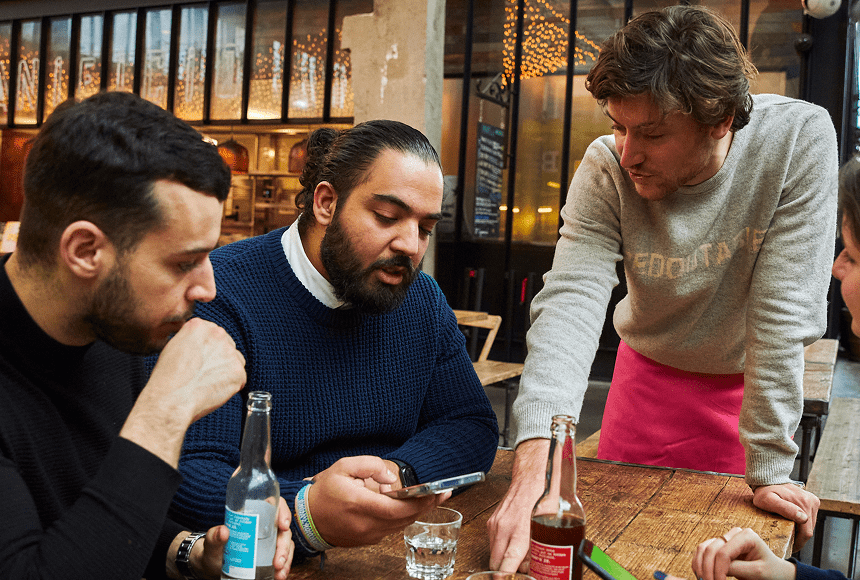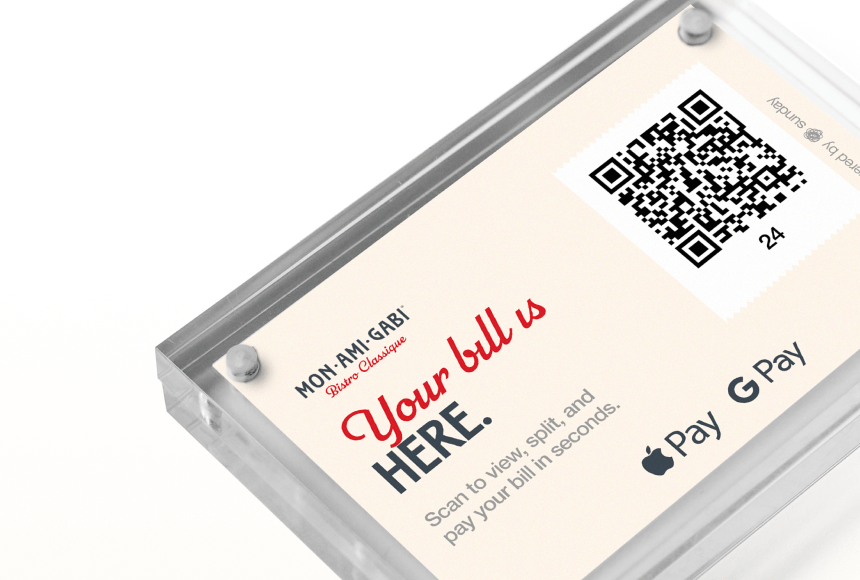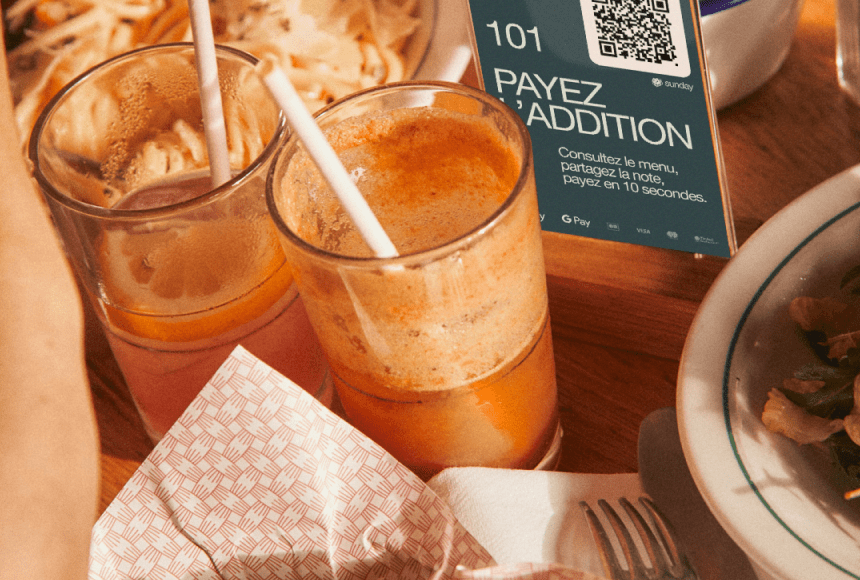
Digital Tipping’s Next Wave: Fueling Restaurant Teams for 2025 and Beyond
The Evolving Landscape of Restaurant Tips
The way customers leave tips has changed drastically in recent years. While a few decades ago, nearly all gratuities were left in cash, technology has paved the way for electronic methods that redefine how diners demonstrate their appreciation. Whether it’s tapping a credit card on a payment terminal or scanning a QR code to complete the entire transaction online, digital tipping solutions continue to gain traction in the United States. By 2025, this shift could become even more pronounced, affecting both restaurant owners and staff.
According to the National Restaurant Association, a growing number of consumers now prefer contactless payments and digital integrations. This preference has become especially apparent in the wake of recent global health events, which spurred widespread adoption of touch-free options. As a result, tipping behavior is also evolving. Where patrons might have once dropped loose change on the table, they’re now following fingertip prompts on a screen in a process that is quicker, cleaner, and more seamless for everyone involved.
Why should hospitality professionals pay attention to these changes? Because digital gratuities often represent a powerful driver of staff motivation. When servers, hosts, and bartenders see their earnings tied to an integrated system that streamlines transactions, fosters transparency, and allows for immediate feedback, they tend to feel more empowered. In turn, owners benefit from enhanced productivity and better service. This article will delve into how digital solutions are shaping the future of tipping, with a special focus on what this means for staff motivation in 2025 and beyond.
Why Digital Tipping Is Gaining Momentum
Digital tipping has been inching into the mainstream for a while, but recent years have accelerated its adoption. Below are some reasons why this trend will only continue to grow:
- Convenience: Nobody likes fumbling for loose bills at the end of a meal. Digital tipping takes seconds, especially when customers can pay directly on their phone.
- Hygiene: There is less physical contact when tips and payments are processed electronically, appealing to customers who prefer safer transactions.
- Transparency and Accountability: Staff members see exactly how much they are receiving, and owners can instantly track tipping patterns.
- Customer Preference: Touch-free payment methods have become a norm in the United States, meaning restaurants that fail to adapt risk being viewed as behind the times.
In a 2022 report from Square, researchers noted that digital tipping rose by more than 25% among certain demographics. This upswing signals a broader shift in consumer habits and provides evidence that diners respond positively to quick and intuitive payment processes.
For restaurant operators, a key factor driving this momentum is the rising popularity of QR code solutions. With a quick scan, customers can review their bill, select a gratuity option, and post a review on platforms like Google, all before their coffee even arrives. Platforms such as sunday, which offer QR code payment flows, cater to this evolving consumer desire for efficiency and convenience. Moreover, digital tipping means restaurant owners can eliminate potential payment bottlenecks, allowing front-of-house teams to focus on delivering outstanding hospitality rather than juggling printed receipts.
Impact on Staff Motivation: A Closer Look
A well-motivated staff is the hallmark of any thriving restaurant. Enthusiastic, engaged employees not only boost the overall guest experience but also foster a more cohesive team dynamic behind the scenes. Digital tipping plays a substantial role here because gratuities can serve as a direct indicator of guest satisfaction.
Here’s why staff motivation might skyrocket with the broader adoption of digital tipping by 2025:
- Instant Gratification: Many digital systems allow servers to see their tips in near-real time. This live feedback loop encourages staff to refine their service quickly, uplifting the entire customer experience.
- Clearer Performance Metrics: By reviewing tip data, managers and staff can spot performance patterns—helping teams collectively improve or providing targeted training where needed.
- Team-Oriented Tipping: Some digital platforms suggest tip pooling based on roles or shifts, ensuring everyone shares in the rewards. This can nurture camaraderie by reinforcing that each staff member’s contribution counts.
- Reduced Stress about Handling Cash: With digital solutions, employees aren’t left counting piles of small bills at closing time, keeping everyone safer and freeing up time for other tasks.
Beyond the financial aspect, digital gratuities also promote accountability. When tips are tracked, there’s less confusion about splitting them weekly or monthly. This transparency boosts trust, reducing potential tension among staff members while providing a clear measure of successful service interactions.
Technology Tools Setting the Bar for 2025
In the not-too-distant future, restaurant owners could adopt even more sophisticated tech solutions that transform the tipping process from a simple financial transaction into a robust feedback system. Some possibilities include:
- Integrated Feedback Mechanisms: Imagine a platform that not only processes tips but also prompts a quick rating or comment section. This instant insight is invaluable for gauging staff performance and guest preferences.
- Predictive Analytics: As digital tipping data grows, machine learning tools could forecast peak tipping times, revenue fluctuations, and even staff scheduling insights, allowing owners to optimize labor costs while maintaining morale.
- In-App Rewards: For teams that thrive on a little friendly competition, digital tipping tools might incorporate gamification, celebrating top earners or those who see big improvements week over week.
- Global Payment Options: As tourism rebounds across the US, more international visitors will appreciate the ability to pay and tip in multiple currencies, all through the same online interface.
These features can collectively transform how restaurants operate. Traditional tip jars at the counter are giving way to all-encompassing payment portals that handle everything: splitting checks, collecting digital tips, prompting reviews, and even luring back repeat diners with personalized promotions. By embracing these tools, restaurants demonstrate a forward-thinking mentality that appeals to modern guests and fosters a culture of excellence among staff.
Fostering a Culture of Appreciation
Anyone who has been in the restaurant industry knows that the hustle never really stops. Between the kitchen chaos, front-of-house customer service, and financial management, it’s easy to lose sight of the people who make it all happen: your staff. Digital tipping models can serve as a daily reminder that each team member’s contribution matters. When employees feel valued, they are more likely to stay engaged and stick around longer.
So, how can an owner foster a culture of appreciation using digital tipping?
- Celebrate Milestones Publicly: Seen a spike in tips on a specific weekend? Consider giving staff a shout-out, using the data from digital transactions as a badge of honor.
- Offer Training and Growth: If a server’s tips begin to plateau or decline, managers can use the tipping dashboards to figure out what’s changed. Offering direct coaching or support can reignite motivation.
- Regular Surveys: Some platforms allow for short staff surveys embedded into the same system that handles tips. This helps owners gather feedback on broader operational issues and demonstrates that leadership cares.
In many ways, digital tips become the day-to-day pulse of the dining experience. Tracking that pulse carefully helps owners gauge how well their restaurant’s environment nurtures exceptional service and fosters professional growth. When employees sense that kind of commitment from management, they’re inclined to rise to the occasion—and the results can be measured right in your digital tipping data.
Navigating Tax Implications and Compliance
Before diving headfirst into new tipping platforms, it’s important to remember that digital gratuities come with obligations. The US federal government classifies tips as taxable income, which means proper reporting is essential. Digital records can streamline compliance, but owners and managers need to stay on top of obligations at both the state and federal levels.
Keep these points in mind as you navigate the tax terrain:
- Accurate Reporting: When tips are processed digitally, employees and owners have a clearer paper trail documenting all gratuities. This can significantly reduce the risk of underreporting.
- Payroll Integration: Many modern POS systems integrate tip amounts directly into payroll, automatically calculating required withholdings. Make sure your chosen solution supports this feature or can connect easily to payroll software.
- Local Regulations: Some states have their own regulations for tip credits, wage distribution, and service charges. Double-check local statutes to remain fully compliant.
While managing taxes might not be the most thrilling topic in the hospitality world, it’s crucial for long-term viability. The advantage with digital tipping systems is that they remove many of the administrative burdens that come with handling cash tips, leaving owners more bandwidth to focus on strategic growth and guest satisfaction.
Paving the Way for 2025: How Payment Solutions Are Evolving
By 2025, technology could move beyond quick QR code payments into fully immersive restaurant experiences. Some speculate about augmented reality menus and virtual tastings, yet the humble tip remains a crucial part of the diner-staff connection. As digital payment methods continue evolving, owners should look for solutions that simplify the process and unify the payment journey for all parties.
For example, a platform like sunday uses a scannable QR code at each table, enabling diners to pay in under a minute. Some restaurants using this approach have reported seeing a rise in gratuities, simply because the process is so direct. When a display prompt clearly lays out tipping options—15%, 20%, 25%, or a custom amount—it normalizes higher percentages and nudges customers to support the team financially.
In an era when every business decision can be data-driven, harnessing insights from digital tipping can inform key strategic moves. Restaurants can identify which servers benefit from particular table setups, or gauge how new menu launches affect diner generosity. By turning real-time data into an asset, you position your restaurant for future success.
Real-World Example: A Downtown Bistro’s Success Story
Consider Olivia’s Garden, a fictional but relatable downtown bistro. Before switching to a digital tipping platform, front-of-house staff relied on a patchwork system of printed receipts, cash tips, and credit-card slips at the register. On busy nights, confusion often reigned. Servers wasted time double-checking who received what, and disputes occasionally arose about shortfalls or miscounted tips.
After implementing a QR code-based payment solution that integrated digital tipping, the entire atmosphere shifted. Diners found it far easier to settle their checks and tip directly from their phone. Within three months, management noticed something remarkable:
| Metric | Before Digital Tipping | After Digital Tipping |
|---|---|---|
| Average Tip Percentage | 16% | 19% |
| Server Turnover Rate | 28% annually | 18% annually |
| Checkout Time per Table | 5 minutes | Under 2 minutes |
The server turnover rate dropped significantly, and several employees reported they felt “seen” by the management team. They no longer felt their evening’s earnings were at the mercy of random chance—digital tips arrived systematically, and each employee could easily track their progress. Buoyed by this transparency, the vibe in Olivia’s Garden remained consistently upbeat, even during hectic shifts.
This hypothetical bistro highlights what’s possible with a well-thought-out, digitally focused approach to tipping. Motivation, transparency, and efficiency create a virtuous cycle that benefits everyone, from the head chef to the weekend part-time host.
Embracing Tomorrow’s Tipping Solutions
Restaurant owners who haven’t yet hopped on the digital tipping bandwagon might find themselves at a crossroads: hold onto traditional methods or embrace modern systems that promise smoother transactions and happier teams. While every restaurant is unique, it’s tough to ignore the advantages of contactless, technology-driven tipping.
As you evaluate which digital solutions fit your establishment, consider these tips:
- Test Different Platforms: Try integrating a small-scale or pilot program, gathering feedback from staff and customers before rolling out a permanent system.
- Offer Guidance to Guests: Some diners might be new to QR code payments. Clear signage and friendly prompts from servers encourage adoption without sounding pushy.
- Train Your Team Thoroughly: Make sure employees understand how digital tipping works. Provide quick references or a brief one-on-one session to ensure everyone is aligned on the basics.
- Track Insights: Use data dashboards to keep an eye on trends such as tip amounts by daypart. This knowledge helps refine staff allocation and scheduling.
- Communicate Outcomes: If and when you see improvements—like reduced wait times or higher tips—celebrate those wins publicly. It boosts morale and confirms that the shift toward digital was a good call.
The future of our industry hinges on innovation that respects classic hospitality while addressing modern consumer demands. Digital tipping is one such leap forward, offering benefits at every level—especially for staff members whose motivation hinges on feeling valued and financially secure.
Moving Forward Together: Empowering Your Team and Your Bottom Line
Restaurant owners often juggle the challenge of bringing in enough revenue to stay competitive while also nurturing an environment in which employees thrive. Digital tipping solutions can be a vital puzzle piece in achieving both. By creating a more transparent, efficient, and customer-friendly tipping model, owners can boost the bottom line and staff satisfaction in one stroke.
Expect continued growth in methods that make dining out quicker and more interactive. As technology evolves, your guests’ expectations will evolve alongside it. Embracing these changes early can help differentiate your restaurant in a crowded marketplace. And when your team members grow in confidence, fueled by real-time feedback (and real-time tips), the entire dining experience can reach new heights.
In particular, a solution like sunday can simplify payments, tipping, and even encourage diners to leave a quick Google review. Each of these features bolsters your establishment’s digital presence and overall customer satisfaction. And in the age of social media and online reviews, that ripple effect can translate to real growth.
Frequently Asked Questions: Digital Tipping 2025
1. How do digital tips differ from traditional cash tips?
While the end goal—recognizing servers and staff—remains the same, digital tips shift the process online. Instead of physically handing over bills, customers tap or scan to complete payment and add gratuity. This difference means tips are automatically tracked, taxed, and processed in real time, offering better transparency and often leading to higher overall amounts.
2. Will switching to digital tipping require a major tech overhaul?
Not necessarily. Many modern solutions integrate easily with existing payment terminals and POS systems. Some restaurants have simply begun placing QR codes at each table, allowing diners to settle up using their smartphones without big upfront tech investments.
3. Do customers tip more when they see preset options?
Studies indicate yes. When diners see preset tip options—like 15%, 18%, or 20%—they’re often inclined to give more than they would if left to guess. The convenience of tapping a button or scanning a QR code also reduces friction, encouraging a higher tip percentage overall.
4. How can digital tipping boost staff retention?
By making gratuities more transparent and predictable, employees often develop a greater sense of trust. They can see how their hard work translates directly into earnings, fostering a tighter alignment between performance and reward. This clarity typically reduces payment disputes, boosting morale and loyalty.
5. Are there limits on how tips are split among staff?
Tip pooling is legal, but it must follow federal and state regulations that protect employees’ rights. Digital tipping solutions can automate tip pooling based on predefined rules, ensuring everyone on the team is fairly compensated. Always review your local laws to confirm compliance.
6. Is digital tipping secure?
Yes. When payments are processed through reputable platforms, encryption and other security protocols protect customer data. Most systems are Payment Card Industry (PCI) compliant, so both owners and guests can have peace of mind.
7. Do managers need to track anything manually?
The beauty of modern digital tipping solutions is that they automatically log necessary data, making manual calculations minimal. Manager oversight, however, is still crucial for compliance and accuracy. Tools often come with dashboards that enable quick verification of daily or weekly tip totals.
8. How can I encourage customers to adopt digital tipping?
Place clear signage or small table tent cards explaining the digital payment process. Train your servers to give a brief, friendly explanation. Emphasize the speed, safety, and convenience. Demonstrating how quick it is—sometimes under a minute—makes a big impact on guest adoption.
9. Will integrating digital tipping affect my restaurant’s image?
If done right, it can strengthen your brand as modern and customer-centric. Diners increasingly expect tech-forward conveniences, especially in urban or fast-paced settings. Communicating why you chose a digital tipping system—such as efficiency, transparency, and staff well-being—goes a long way toward reinforcing a positive image.
10. How quickly can a restaurant see benefits from digital tipping?
Many owners report improvements in tip averages and checkout times almost immediately after implementation. Depending on the size of your team and how well you communicate the change to customers, positive outcomes can appear within days or weeks. Over time, the real magic happens as you analyze the data and make strategic decisions that heighten both staff morale and customer satisfaction.
Find out more today
Drop us your details below and we’ll reach out within the next 24h
More tips means a better service.
More tips mean better guest-experience, and better staff-retention.




